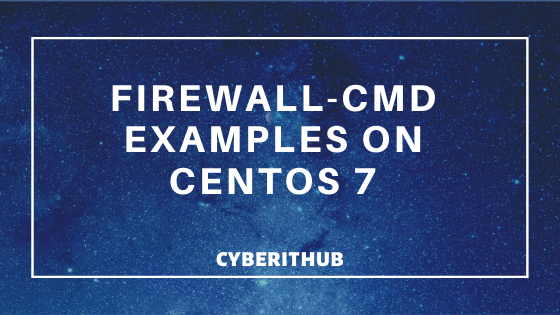

CHECK MY FIREWALL SETTINGS CENTOS HOW TO
The follow three examples show you how to set your HTTP, HTTPS and NO_PROXY settings.

The export command is used to set environment variables. Traffic matching any of the patterns set here will go directly to the destination host. From it, select port as the new rule type then click next. This will open a new inbound rule wizard.

This will lead you to a window with a list of rules on the left side.
CHECK MY FIREWALL SETTINGS CENTOS WINDOWS
Similar to HTTP_PROXY, this sets an endpoint for all traffic SSL\TLS encrypted traffic traversing port 443.Ī comma-delimited list of subnets, IP addresses, hostnames and domain names to exclude from proxy. Click on Advanced Settings on the left hand pane from the Windows Firewall window. Sets an endpoint for all HTTP traffic traversing port 80. There are three variables available – for HTTP traffic, HTTPS traffic, and by-pass traffic. Setting the proxy on a Linux installation is primarily done via setting environment variables. They can be applied to any Linux distribution with little or no conversion. The following instructions are not inherent to RedHat distributions only. In this article I will provide instructions on how to configure your proxy for various use cases, from a default global configuration to temporary individual configurations. Netfilter is a kernel module, built into the kernel. Iptables is the userspace module, the bit that you, the user, interact with at the command line to enter firewall rules into predefined tables. In environments such as these you will need to configure your Red Hat-based distribution to pass traffic to the proxy server. CentOS has an extremely powerful firewall built in, commonly referred to as iptables, but more accurately is iptables/netfilter. Most organizations funnel all Internet-bound traffic through a proxy server.


 0 kommentar(er)
0 kommentar(er)
